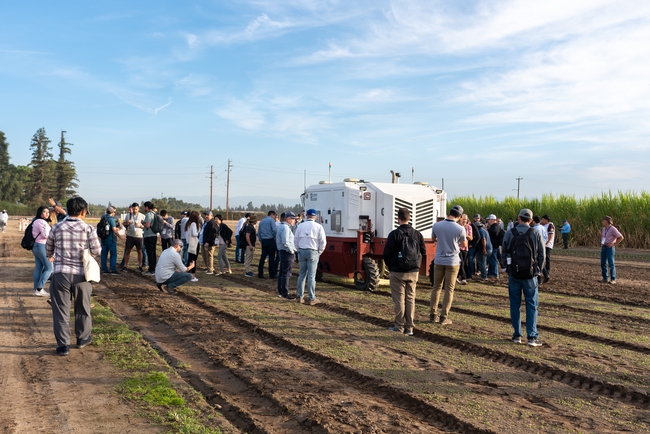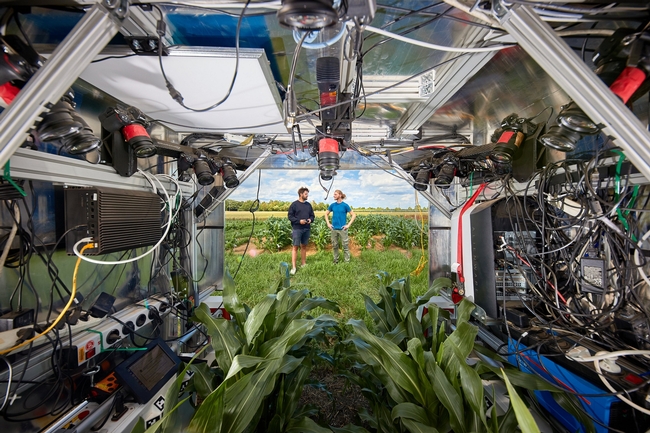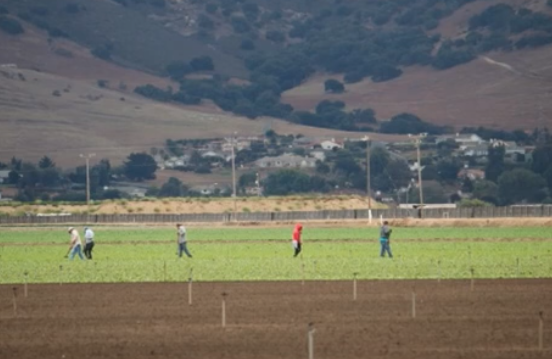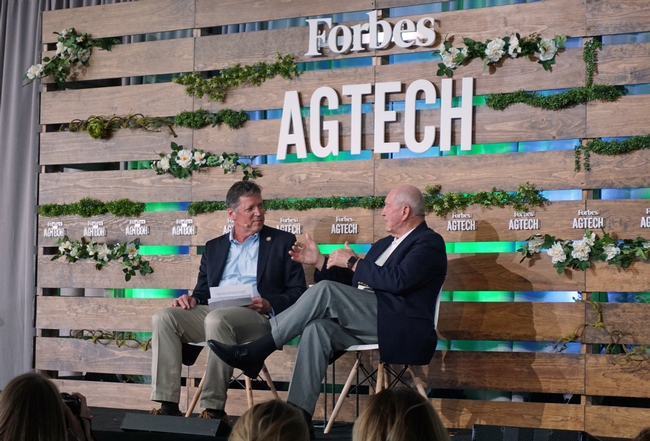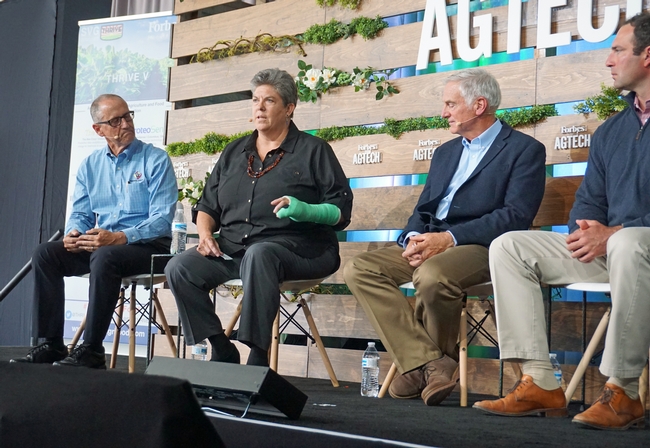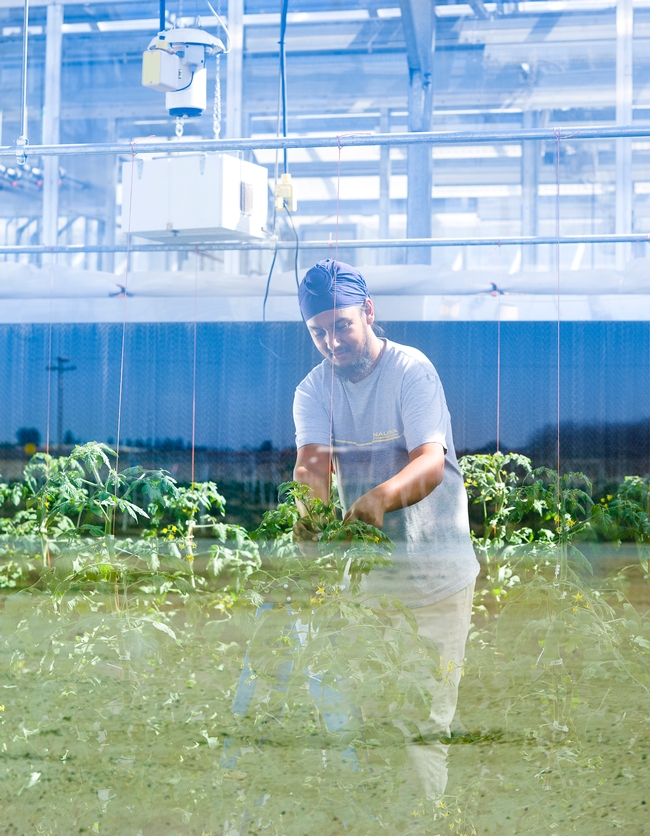Posts Tagged: agtech
Sponsorships available until Feb. 16 for agtech companies to participate at AgroBaja 2024
The VINE at UC ANR partners with GO-Biz and CDFA to subsidize agtech companies
Agricultural technology companies in California are eligible for sponsorships to participate in the upcoming AgroBaja 2024, the leading agricultural technology event taking place in Mexicali, Mexico, on March 7-9. Applications will be accepted until Feb. 16 by The VINE, an initiative at the University of California Agriculture and Natural Resources, in partnership with the California Governor's Office of Business and Economic Development (GO-Biz) and the California Department of Food and Agriculture.
This effort is part of a broader initiative to encourage the growth and development of the agtech sector, providing a stage for California businesses to share their innovative technologies and services with the international community. The collaboration highlights a shared commitment to advancing California's position in the global agtech landscape.
To encourage participation, The VINE and UC ANR are extending a robust support package to attendees, which includes:
- Reduced participation fees: Offering subsidized registration costs ranging from $250 to $500, enabling a wider array of companies to engage.
- Hotel accommodations: Providing complimentary hotel stays to alleviate logistical challenges for participants.
- Exhibition space: Allocating a dedicated pavilion area for companies to showcase their technologies and services.
- Logistical support: Offering assistance with local transportation and equipment logistics.
"This initiative represents a significant step towards enhancing the global competitiveness of California's agtech industry," said Gabe Youtsey, chief innovation officer at UC ANR and co-founder of The VINE. "By reducing financial barriers, we are opening doors for innovative companies to showcase their solutions, connect with international stakeholders and pave the way for future collaborations. We believe that our support will ignite new opportunities for growth and innovation in the agricultural sector."
Feb. 16 is the deadline to apply. For application details and more information about AgroBaja 2024, please visit https://bit.ly/CA-Agrobaja-Delegation.
About The VINE:
The VINE, an initiative of University of California, Agriculture and Natural Resources, is California's agriculture, food and biotech innovation network. Our mission is to harness the power of open innovation to help industries and entrepreneurs grow and scale globally while catalyzing technology innovation and commercialization for productive, sustainable and equitable food systems. We connect entrepreneurs to a vast network of public and private sector resources, build collaborations that accelerate technology solutions to solve industry challenges, and grow regional capacity to support global innovation as an economic opportunity.
Ag tech focus of free DIGICROP online conference March 28-30
The International Conference on Digital Technologies for Sustainable Crop Production (DIGICROP) will be held March 28-30. The conference is a fully remote event with presentations in video format followed by discussions.
DIGICROP 2022 is organized by the German Cluster of Excellence “PhenoRob – Robotics and Phenotyping for Sustainable Crop Production” at the University of Bonn and the AI Institute for Next Generation Food Systems. It brings together researchers across disciplines who develop, propose, use or evaluate new digital technologies to enhance the sustainability of crop production, crop breeding, biodiversity and ecosystems. The goal of the event is to foster a robust international and interdisciplinary dialogue in these topic areas.
Although scientists and researchers will be delivering fairly technical presentations, the conference is open to the public, said Hanna Bartram, education and public engagement coordinator for the AI Institute for Next Generation Food Systems. The institute is supported by the U.S. Department of Agriculture's National Institute of Food and Agriculture, as part of a larger initiative led by the U.S. National Science Foundation.
Participants can view all of the talks ahead of time and explore the program for the live event at https://digicrop.de/program.
“All of the talks are already on the website. People can watch them now,” said Andy Lyons, program coordinator for Informatics and GIS at University of California Agriculture and Natural Resources, a partner of the AI Institute for Next Generation Food Systems. “The live event March 28-30 will be devoted to Q&A with the presenters.”
Examples of presentations include:
- Keynote speaker Stavros Vougioukas, professor of biological and agricultural engineering at UC Davis: Robotic harvesters and harvest-aids: Challenges and opportunities
- Steve Fennimore, UC Cooperative Extension specialist at UC Davis:
Automated Weed Removal Technologies Greatly Improve the Resilience of Vegetable Weed Management Programs - Christine Diepenbrock, assistant professor in the Department of Plant Sciences at UC Davis:
Digital and AI technologies to improve crop nutritional quality and abiotic stress tolerance - Isaya Kisekka, associate professor of agrohydrology and water management in the Department of Land, Air and Water Resources and Department of Biological and Agricultural Engineering at UC Davis:
Evaluating the effect of Soil Heterogeneity on Root Zone Water Dynamics in Almond Orchards using Electrical Resistivity Tomography - Joshua Viers, professor of water resources management in the School of Engineering at UC Merced:
AI for Ag for the San Joaquin Valley: using inclusive innovation to break the productivity paradox
Registration is open until March 24 and free of charge. To register, visit https://digicrop.de/register.
Join the live event March 28-30 starting at 8 a.m. Pacific time via Zoom. The Zoom links will be made available a few days prior to the conference via the conference area (login required) at https://digicrop.de/conference-area.
For more information, please contact the conference organizers at digicrop2022@phenorob.de. To join the discussion on Twitter, follow #DIGICROP2022 and @ai_nextgenfood.
The AI Institute for Next Generation Food Systems brings together more than 40 researchers from six institutions: UC Davis; UC Berkeley; Cornell University; the University of Illinois, Urbana-Champaign; UC Agriculture and Natural Resources; and the U.S. Department of Agriculture's Agricultural Research Service.
Rural connectivity needed to make the best use of technology in agriculture
The Forbes AgTech Summit in Salinas in June on “The Future of Food” showcased technology, innovation and ideas that will make agriculture more efficient, productive, profitable and safe. To make these advancements accessible to all Americans, broadband connectivity must reach currently unserved rural areas, speakers said.
“We've got gee-whiz technology that is dependent on broadband,” said U.S. Secretary of Agriculture Sonny Perdue, the event's keynote speaker. “Rural broadband is a huge issue with transformational capacity to bridge the rural-urban divide.”
A former farmer and governor of Georgia, Perdue said many people who now live in urban areas would welcome the opportunity to populate locations with a slower pace and lower cost of living.
“If they could work from home, if they had connectivity to do their jobs there, many people would choose to live in rural areas,” he said.
Beth Ford, president and CEO of Land O'Lakes, Inc., a $15 billion company headquartered in Minnesota, said about 30 percent of farmers across the country have no access to broadband.
“We have a shared future. Rural communities need to be vibrant,” Ford said. “That starts with broadband.”
The effort to extend broadband access to rural communities in California is a priority for UC Agriculture and Natural Resources vice president Glenda Humiston. While it is potentially expensive to bring internet connectivity to every resident of the state – from the far reaches of Modoc County in the north to remote desert communities near the Mexican border in the south – those communities' lack of high-speed internet is exacting a high economic, medical, social and educational cost.
Humiston was part of a Summit panel that discussed how to cultivate the next generation of leadership in farming. The panelists said future ag industry leaders will need traditional leadership skills – communicating and listening well – but with the growth of agricultural technology, digital literacy is imperative. Using these new high-technology tools will also require broadband coverage, Humiston said.
“Technologies that use artificial intelligence are increasingly dependent on high-speed internet connectivity for real-time data uploads and processing in the cloud,” she noted. “If farms cannot get affordable broadband coverage, or if bandwidth is limited, this will greatly hinder their ability to adopt new technologies.”
Event highlights
On the first day of the summit, nine companies competed for a $200,000 investment from SVG Ventures-THRIVE. The startup companies' ideas exemplified the emerging technologies that are being developed to advance the future of food and agriculture. The winner was Livestock Water Recycling, a Canadian startup that has developed a way to treat large quantities of manure from dairies, hog farms, beef feeding facilities and anaerobic digesters. The system separates the liquid from the barn into solids, nutrients for precise fertilization, and potable water.
“Creating clean water from manure is exciting,” said CEO Karen Schuett in her presentation.
ProteoSense won the Food Safety Award and The Bee Corp took home the Sustainability Award. ProteoSense is a biotechnology company in Columbus, Ohio, which developed a tool for quick, onsite food safety testing. The Bee Corp offers thermal imaging with proprietary algorithms for accurate monitoring of bee hive health without disrupting the insects by opening the hive.
Two competitors partnered with UC to develop their innovations. Tensorfield Agriculture used technology tested at UC Davis in its weeding robot. The robot applies heated canola oil to weeds, killing weeds within an hour without herbicides and without disturbing the soil. FarmX combines software and sensors to measures soil, plant and environmental variables and accurately measure water stress. The company counts UC Cooperative Extension emeritus advisor Blake Sanden on its team.
The key role of land grant universities like the University of California in developing, testing and implementing agricultural technologies was noted frequently during the Forbes AgTech Summit.
“The advantage of basic and applied ag research, and delivery by the extension service is what's made the U.S. a superpower of food in the world,” said secretary Purdue. “We're on the cusp of regeneration of agriculture and digitization of agriculture. We have the ability, with land grant universities and extension service, to get on the ground floor of understanding new technology.”
Tara Vander Dussen, environmental scientist and farmer at the 6,000-cow New Mexico Milkmaid dairy, also advised, “If you need sustainability advice for your dairy, go to your land grant university.”
UC ANR was a sponsor at the partner level of the Forbes AgTech Summit, which brings together bright minds and innovative institutions from two key parts of California's economic engine — agriculture and technology.
Hackers compete for best ag app
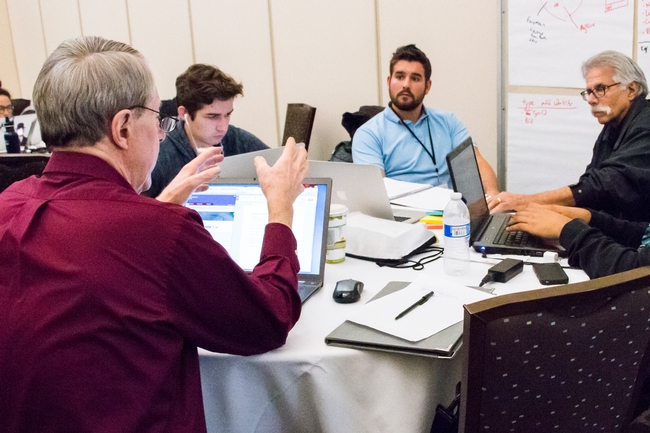
Old coffee cups, laptops streaming code, baggy eyes deprived of sleep: all the usual signs of hackers at work. But a poorly lit hacker hideaway this was not.
The overnight competition, called the Apps for Ag Hackathon, featured farmers, food science students and UC Agriculture and Natural Resources (UC ANR) extension specialists. They teamed up with software developers to craft quick technology solutions that addressed deep challenges in the planet's food systems.
A summit for solutions
The hackathon, in partnership with the World Food Center at the University of California, Davis, was one of a series of events at the Food, Ag and Health Solution Summit, held Dec. 1-3 at UC Davis. Each chapter of the summit brought together uncommon collaborators to partner on a range of possible agtech solutions.
On the first day, the World Food Center's Precision Ag Workshop focused on paving a long-term roadmap with potential industry partners. Ranging from small startups to global corporations and well-established California commodity associations, each organization was investing in front-end irrigation technologies and looking for new opportunities to collaborate with academic researchers.
The pace switched to rapid-fire for a panel at the summit forum on day three: entrepreneurs from eight different agtech startups had seven minutes to pitch their products to the audience. Delving deeper into the world of agtech financing, a later panel discussion asked professional investors what they would look for in startup models.
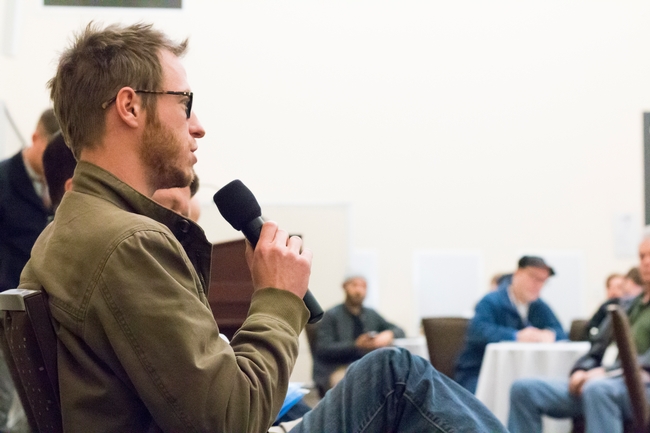
Hacking through the night
The hackathon ran alongside the forum and other summit events. Participants had only a 32-hour window to fuse together teams, brainstorm a product, develop rough cuts of their software and present their final pitches to the judges.
"People get a little low on sleep, they get a little silly, the creative juices really start flowing," said Apps for Ag organizer Patrick Dosier to Capital Public Radio. "Software developers often have their headphones on and they're in the zone writing code."
With $10,000 in total prize money and a paid trip to Zurich, Switzerland, at stake, the hackers in their final minutes before turning in their presentation slides were actually focusing more on the human network. The conversations evolved away from talk of web hosting software and .png files to meeting for a coffee later and talking about ways to collaborate in the future. While some groups rehearsed their pitches, others exchanged business cards and phone numbers.
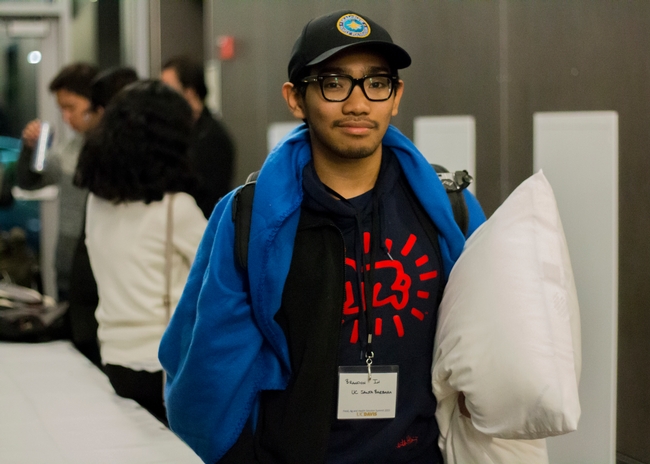
From the Central Valley to Silicon Valley
By presentation time at the tail end of the conference, the hackers were visibly exhausted, some carrying pillows and others seen napping in vacant rooms. Thanks to blankets donated by AT&T, many were able to grab quick rests during the hack.
On stage, the Ag for Hire team showed off their app. It connected contract farmworkers to farmers looking to hire. A "LinkedIn for agricultural labor," the app idea took first place at the competition.
"As a worker myself, it's hard to find a job where I can apply my skills," said team member Alejandro Avalos, who has worked on farms since he was 12 years old. "Our app helps a worker find a job based on his skills and actually get a decent wage for it."
Nick Doherty, a UC Davis undergraduate student and recent pick for Apple's 20-Under-20 list, was also on the team.
Along with the $5,000 award, the team will be flown to the Thought for Food Global Summit in Switzerland next year.
Second place and a $3,000 prize went to the team for CropRescue, an app that allows growers to communicate directly with food banks to make excess food donations easier and more efficient. The final $1,500 prize went to the Green Thumb team, which created a task-tracking app to enable better communication among crop advisers, growers and foremen.
UC innovation goes global
Patrick Brown, a UC Davis plant nutrition professor and pomologist at the Agricultural Experiment Station, advised the hackathon teams, as well as taking part in other events. UC ANR small farms advisor Margaret Lloyd also participated in the summit.
Sponsors for the Solution Summit prizes included Intel, UC ANR, the UC Global Food Initiative, UC Innovation Alliances and the Royse Law Firm. The Global Food Initiative also sponsored travel for two doctoral candidates at UC Berkeley and UC Riverside. The Solution Summit was held in partnership with the Innovation Institute for Food and Health, the Mixing Bowl Hub and the SARTA AgStart incubator.
See the Food Hackathon that inspired the competition.
Author: Brad Hooker

